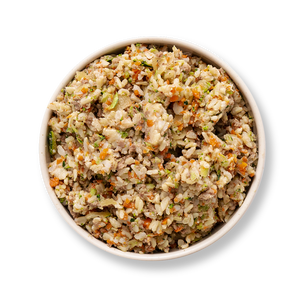Is It Too Hot? The Vet-Approved Guide to Exercising Dogs in Hot Weather (2025)
Is It Too Hot? The Vet-Approved Guide to Exercising Dogs in Hot Weather (2025)
Surprisingly, 1 in 7 dogs treated for heatstroke don't survive, and 75% of these cases stem from exercising dogs in hot weather. Unlike humans,
our canine companions can only sweat through their paws and nose, making them particularly vulnerable to overheating during summer
activities.
In fact, while we might think a simple walk is harmless, nearly 70% of dogs with exercise-induced heatstroke become unwell after just a regular
walk on a hot day. This risk increases for certain breeds - flat-faced dogs are twice as likely to develop heatstroke compared to their longer-
muzzled counterparts. However, with proper knowledge and planning, we can keep our pets safe and active during warm weather.
In this vet-approved guide, we'll explore how to exercise your dog safely in hot weather, recognize warning signs, and create a summer-friendly
exercise routine that keeps your furry friend both healthy and cool.
Signs Your Dog Needs a Different Exercise Plan
Paying attention to your dog's behavior and physical signs when exercising in warm weather can prevent dangerous situations. Initially, dogs
show subtle signs of heat discomfort through behavioral changes - they might become less active or seek out shady spots to rest.
Your dog needs an adjusted exercise plan if you notice these early warning signs:
Excessive panting that doesn't resolve with rest
Drooling more than usual
Walking closer to you or tugging on the leash
Showing signs of irritability or wanting more space
Losing interest in regular activities
Appearing weak or having trouble standing
Additionally, certain breeds face higher risks. Flat-faced dogs like Pugs, Boston Terriers, and Bulldogs can't cool themselves as efficiently
because of their shorter airways. Furthermore, dogs with thick coats or those carrying extra weight need extra monitoring.
Specifically, heat stress can progress rapidly through three stages. The first stage shows increased thirst and panting. If not addressed, this leads
to weakness and episodes of collapsing. The most severe stage brings serious symptoms - bright red or pale gums, dizziness, and muscle tremors.
Some breeds might even become snappish in hot weather. Consequently, I recommend minimizing interactions between your dog and strangers,
especially children, when temperatures rise. If your dog displays any of these signs or unusual behavior during exercise, it's time to modify their
activity routine.
Creating a Summer Exercise Schedule
Setting up a proper exercise schedule for summer requires careful planning and timing. Generally speaking, most dogs need 30-60 minutes of
daily exercise, but the summer heat demands strategic adjustments to this routine.
The optimal times for exercising dogs in hot weather are:
Before 8 AM - When temperatures are lowest
After 7 PM - Once the day has cooled
Avoid 3-6 PM - Peak heat hoursMoreover, I recommend reducing both the duration and intensity of exercise sessions during hot weather. Accordingly, start with shorter, low-
intensity activities and gradually build up your dog's heat tolerance. For higher intensity workouts, aim for 30 minutes 2-3 times weekly.
Primarily, the success of summer exercise depends on location selection. Shaded forest paths offer excellent opportunities for both walking and
mental stimulation through sniffing activities. Notably, areas near water sources provide additional cooling options, but always carry fresh
drinking water and a collapsible bowl for regular hydration breaks.
For dogs transitioning from winter inactivity, building general fitness gradually helps prevent injuries like paw pad damage. A well-planned
schedule should include at least 5 days of combined exercise weekly. Remember to adjust the intensity based on your dog's response - if they
show signs of soreness or fatigue, modify the routine accordingly.
Smart Ways to Keep Dogs Active and Cool
Indoor activities offer excellent alternatives for exercising dogs in hot weather. Primarily, mental stimulation games can tire your dog as
effectively as physical exercise - ten minutes of mental training equals a 30-minute walk.
A game of "Find It" engages your dog's natural sniffing instincts. Hide treats around your home or use snuffle mats to create an engaging indoor
treasure hunt. Alternatively, transform your air-conditioned space into an exercise zone - many pet stores and hardware stores welcome dogs,
offering a cool environment for walking.
Water-based activities provide refreshing exercise options. Setting up a kiddie pool or sprinkler system in your yard creates opportunities for play
while maintaining proper body temperature. Indeed, about 70% of a dog's internal heat releases through their skin, making water play
particularly effective for cooling.
For dogs requiring structured exercise, cooling gear can help manage body temperature. Cooling vests work through evaporative cooling -
simply wet the vest and let it gradually cool your dog. Likewise, cooling mats offer a comfortable spot for rest between activities.
Indoor training sessions simultaneously provide physical and mental exercise. Teaching new tricks or practicing obedience commands keeps your
dog engaged while staying cool. Therefore, incorporating these activities into your routine helps maintain your dog's fitness level without risking
overheating in summer temperatures.
Conclusion
Summer exercise with dogs requires careful planning and attention, though keeping our furry friends active during hot weather doesn't need to
be complicated. Through proper timing, location selection, and activity choices, we can help our dogs stay fit while avoiding dangerous
overheating.
Remember that each dog responds differently to heat. Certainly, flat-faced breeds and those with thick coats need extra care, but all dogs benefit
from early morning or evening exercise schedules. Additionally, mixing outdoor activities with indoor mental stimulation games provides
balanced exercise without risking heat stress.
Most importantly, watching for warning signs helps prevent serious health issues. Rather than pushing through concerning symptoms, adjust
your exercise plan at the first sign of heat discomfort. After all, a healthy dog is a happy dog, and small adjustments to their routine can make significant difference in their summer safety and enjoyment.








